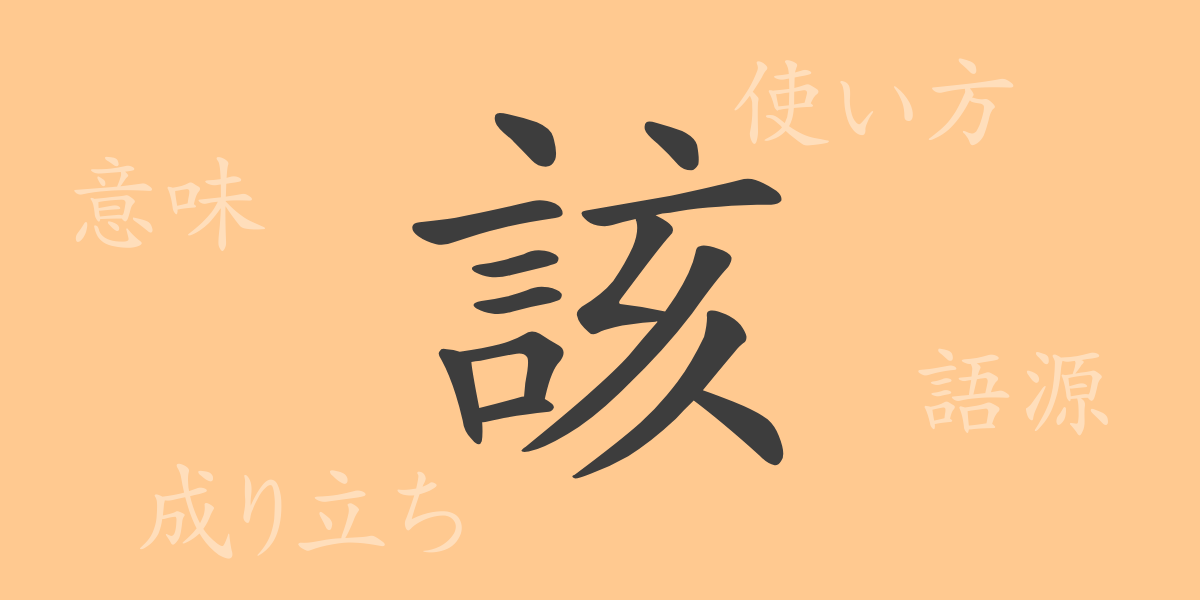The richness of expression in the Japanese language is backed by the deep meaning and history behind each kanji character used. The common kanji “該 (Gai)” is no exception, and its presence is essential for enhancing the accuracy of expression in Japanese. In this article, we will delve into the origins of the kanji “該 (がい)”, its contemporary usage, and even its pronunciation and phrases, exploring its various aspects.
The Origins of 該 (Gai)
The kanji “該 (Gai)” has developed its form from ancient Chinese oracle bone script. This character is composed of the part that represents speech “言 (Kotoba)” and the part that indicates sound “亥 (Gai)”. Originally, it was used to mean “appropriate” or “pertaining to” in the sense of speaking content that is fitting. Over time, “該 (Gai)” has expanded its usage and continues to play a vital role in modern Japanese.
The Meaning and Usage of 該 (Gai)
In modern Japanese, the main meaning of “該 (Gai)” is used in forms such as “当該 (Tougai)” and “該当 (Gaitou)” to mean “applicable to that thing” or “related to”. It is often used in legal documents and specialized contexts to refer to specific matters or items. Moreover, it is seen in business documents and reports as a relatively formal expression.
How to Read 該 (Gai), Stroke Count, and Radical
Understanding the pronunciation and elements of the kanji “該 (Gai)” can deepen one’s understanding of the Japanese language.
- Pronunciation: Onyomi (Sino-Japanese reading) is “がい(Gai)”, no Kunyomi (native Japanese reading)
- Stroke Count: A total of 12 strokes
- Radical: 言 (Kotobahen – speech radical)
Phrases and Proverbs Using 該 (Gai) and Their Meanings
Phrases and idioms containing “該 (Gai)” are useful in Japanese expression when referring to specific phenomena. Here are a few examples:
- 当該 (Tougai): Pertaining directly to the matter at hand.
- 該当 (Gaitou): Meeting certain conditions.
- 該処 (Gaisyo): That place. A term used to specify a location.
- 該当者 (Gaitousya): A person who meets certain conditions.
Summary of 該 (Gai)
The kanji “該 (Gai)” is one of the key elements that enable precise expression in the Japanese language. Frequently seen in legal documents and business communication, this kanji plays an indispensable role in indicating specific matters or situations. Understanding its origins and usage can further enhance one’s proficiency in Japanese.

























